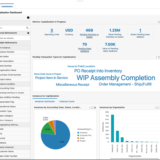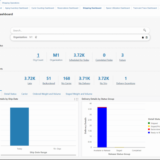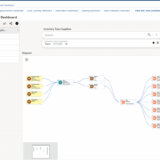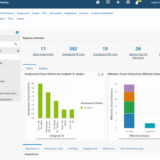How to Add Data Visualization and Empower EBS Users With Enterprise Command Centers
In 2018, Oracle announced the release of Oracle Enterprise Command Centers (ECC) for E-Business Suite. This EBS add-on provides users with discovery-oriented dashboards that bring together diverse operational data from across Oracle E-Business Suite.
Oracle Endeca, its predecessor, needed an additional license and required a complex implementation, making it an expensive add-on to the EBS Suite. Oracle released ECC for free and with significant improvements from the technical and business side. Since then, Oracle committed to the product, releasing bi-annual updates and adding up to 32 command centers with 110 dashboards.
ECC is available for implementation from version EBS 12.2.4 onwards:
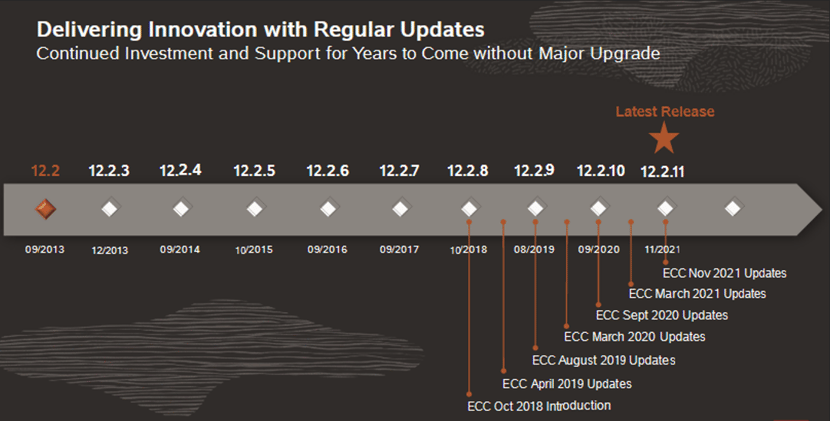
E-Business Suite and ECC Road Map
From the technical side, the improvements include a much-simplified implementation process. ECC requires ATG and ECC adapter patches corresponding to the instance version and the required patches for the modules intended to implement the Command Centers. The ECC managed server runs over a Weblogic 12c recommended to run in a standalone server, but can be implemented in the same EBS Apps server depending on the hardware requirement. An intuitive installation script installs the Weblogic software, creates the WLS domain, configures the DataSources, and performs the integration with EBS. After everything is set up on the ECC side, a few updates and a Webservices bounce are required on the EBS side to implement ECC.
From the ECC Developer role, the system administrators can manage the available Command Centers and manage the jobs to load data to the dashboards:

ECC Developer Responsibility Console
Enterprise Command Centers integrate tightly with the Oracle E-Business Suite UI and security system so that users remain within their E-Business Suite sessions as they navigate from a command center dashboard to a transaction page and back. After granting the ECC roles to the required responsibilities, the end users will have the power to submit load jobs as Concurrent requests:
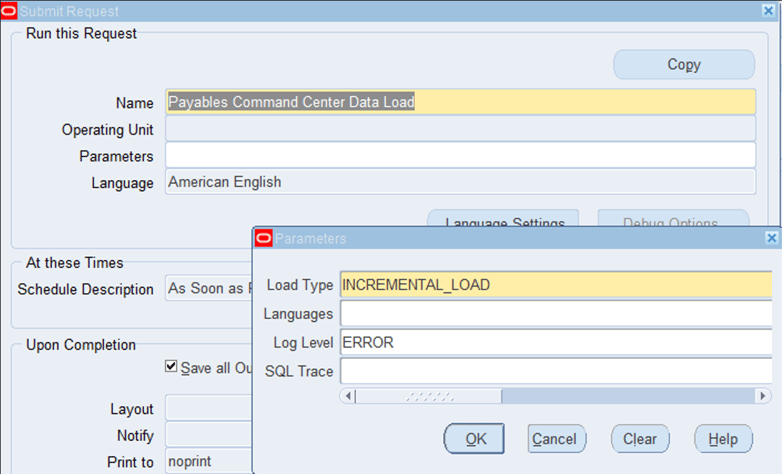
Payables Command Center Data Load Job
Once the data is loaded to the dashboards and the responsibilities are assigned with the required roles, users can visualize and navigate through the data:
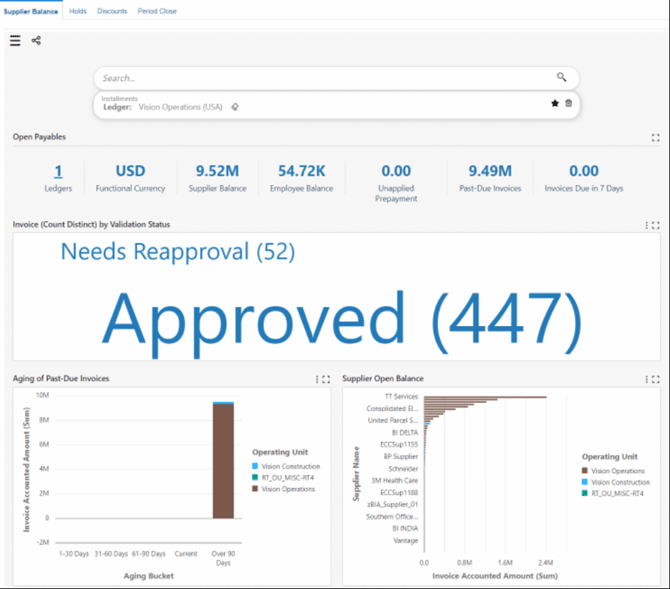
Payables – Supplier Balance Dashboard
Increasingly, users can start their E-Business Suite sessions with command center dashboards that let them browse and drill on key indicators, charts and graphs and leverage consumer-like search and filters to quickly identify and act on their highest business priorities.
With command centers, users have a better, more productive user experience, while IT has reduced demand for custom operational reports:
To extend the functionality of ECC, customers can create their own custom dashboards with the available datasets to accommodate the data to their business needs. Oracle released detailed documentation on how to modify or create new dashboards for ECC.
The latest version of ECC (V8) includes support for TLS secure connection and high availability. A recent functionality added is the capability of integration with Oracle Apex within ECC. So, instead of navigating to regular Oracle E-Business Suite forms to perform a required action, users can navigate to the APEX form and perform the action.
These are the currently available Command centers:
- Financials: Receivables, iReceivables, Payables, Assets, Lease Contracts (Financials), Lease and Finance Management
- Procurement and Projects: iProcurement: Consumer-like Shopping, Procurement, Projects, Project Procurement, Contract Lifecycle Management for Public Sector
- Order Management and Logistics: Order Management, Inventory Management, Advanced Pricing, iStore: Modern Shopping Experience, Landed Cost Management, Channel Revenue Management, Incentive Compensation
- Manufacturing: Discrete Manufacturing, Process Manufacturing, Outsourced Manufacturing, Project Manufacturing, Cost Management, Quality
- Asset Lifecycle and Service: Enterprise Asset Management, Asset Tracking, Service Contracts, Service (TeleService), Field Service, Depot Repair
- Human Capital Management: Human Resources, Payroll
ECC can add great value to your current EBS implementation with no additional licensing costs, and with a simple implementation. It can modernize and improve the user experience in EBS without the need of additional products or complex system integrations. Key users will have much better visualization of the data and will be able to make better decisions. If you’re still in EBS 12.1, ECC is another great reason to go for the upgrade.
For more details of all the available dashboards and the functional processes, take a look at this guide.
Feel free to share your questions in the comments and subscribe so you don’t miss the next post.
Share this
Share this
More resources
Learn more about Pythian by reading the following blogs and articles.
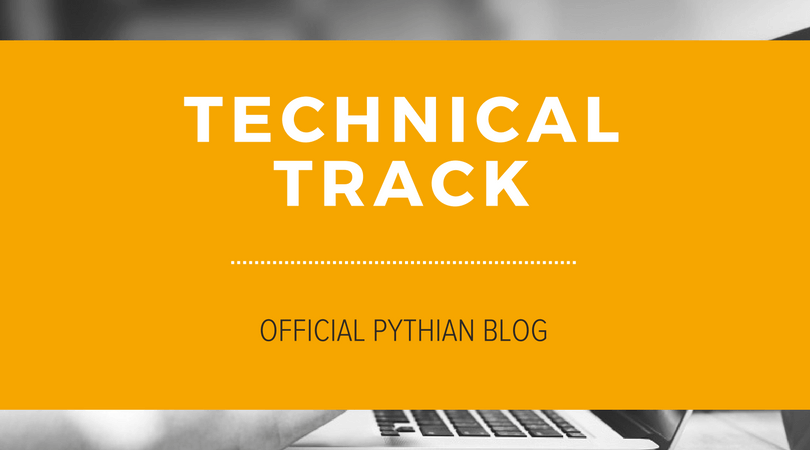
EBS DBA: R12.1.2 Another Step for Automated Vanilla EBS Cloning
Oracle E-Business Suite Database Upgrade to 19c
Moving APEX Applications Repository with APEXExport
Ready to unlock value from your data?
With Pythian, you can accomplish your data transformation goals and more.

